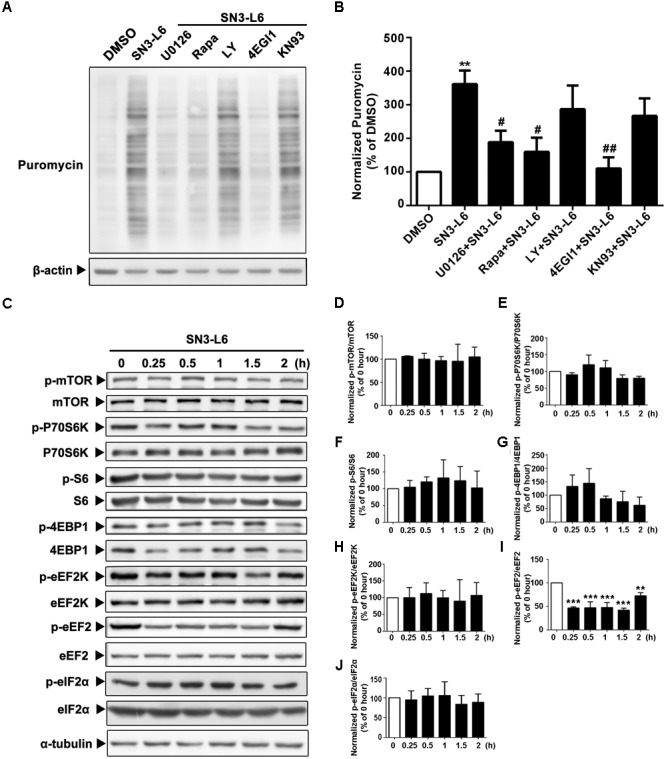FIGURE 4.

Translation activated by SN3-L6 requires MEK and mTOR activity and is cap-dependent. (A) Neuro-2a cells were treated with SN3-L6 (25 μM) together with MEK inhibitor (U0126; 10 μM), mTORC1 inhibitor [Rapamycin (Rapa); 10 μM], PI3K inhibitor (LY294002; LY; 10 μM), cap-dependent translation initiation inhibitor (4EGI1; 50 μM) or CaMKII inhibitor (KN93; 0.5 μM) for 2 h. Nascent polypeptides were examined by puromycin incorporation. (B) Quantification of puromycin incorporation levels. ∗∗P < 0.01, SN3-L6 vs. DMSO; #P < 0.05, ##P < 0.01, co-treatment vs. SN3-L6. (C) SN3-L6 was added in Neuro-2a cells for indicated time points (0–120 min). Cells lysates were subjected to Western blot analysis for the phosphorylated- and total-forms of different signaling molecules. (D–J) Quantification of the phosphorylation levels of different molecules. ∗∗P < 0.01, ∗∗∗P < 0.001, SN3-L6 treatment vs. no treatment (0 h). All data shown in this figure are presented as mean ± SEM from at least three independent experiments. Statistical analysis was subjected to one-way ANOVA with Bonferroni multiple comparison test.
